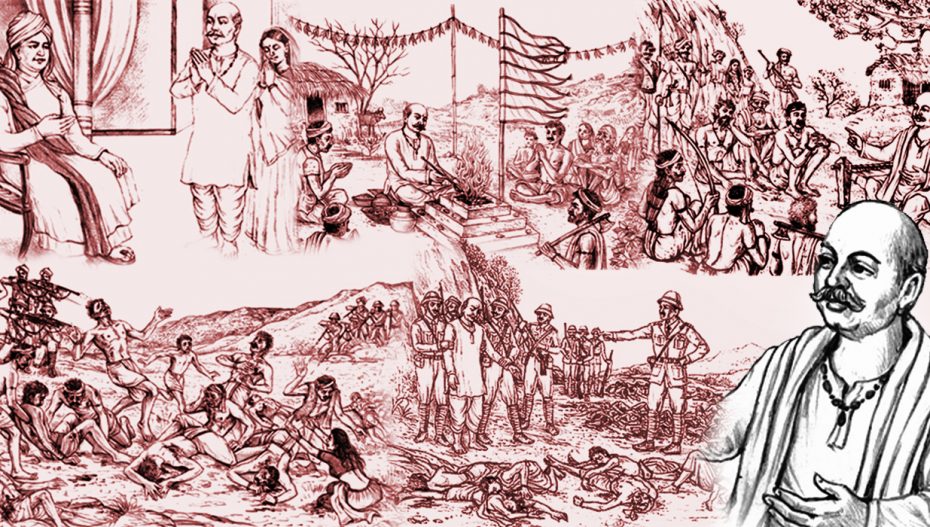As the Vicky Kaushal Starrer Udham Singh reopens the wounds of the Jallianwala Bagh massacre, it is perhaps the right time to revisit another horrific mass murder committed by the British in India that has been lost in the foggy ruins of time.
That genocidal act of the colonial rulers was carried out on November 19, 1918 near Mangarh, a tribal area spanning Gujarat, Rajasthan and Madhya Pradesh.
The death toll in the Mangarh massacre is contested. According to a book from Godhra’s Santrampur taluka, 1,507 Bhil tribals were killed. However, folklore has it that around one-and-a-half-lakh Bhils had gathered on the Mangarh hill when the British troops opened fire.
The Mangarh hill held a deep significance for the Bhils, who were inspired to rise against the oppressive British policies by a social reformer saint, Guru Govind.
The man who led a revolution
Born into a Vanjara (gypsy) family, Guru Govind came from a humble background. His family worked on loading goods to be transported on bullock carts and other pack animals. As an adolescent, Guru Govind was introduced to the world of spiritualism and scriptures by the temple priest who would recite him Ramcharitmanas and Kabir’s dohas. Guru Govind was highly respected in the tribal society for his amicable relations with the Bhil children and for his efforts at their spiritual education.
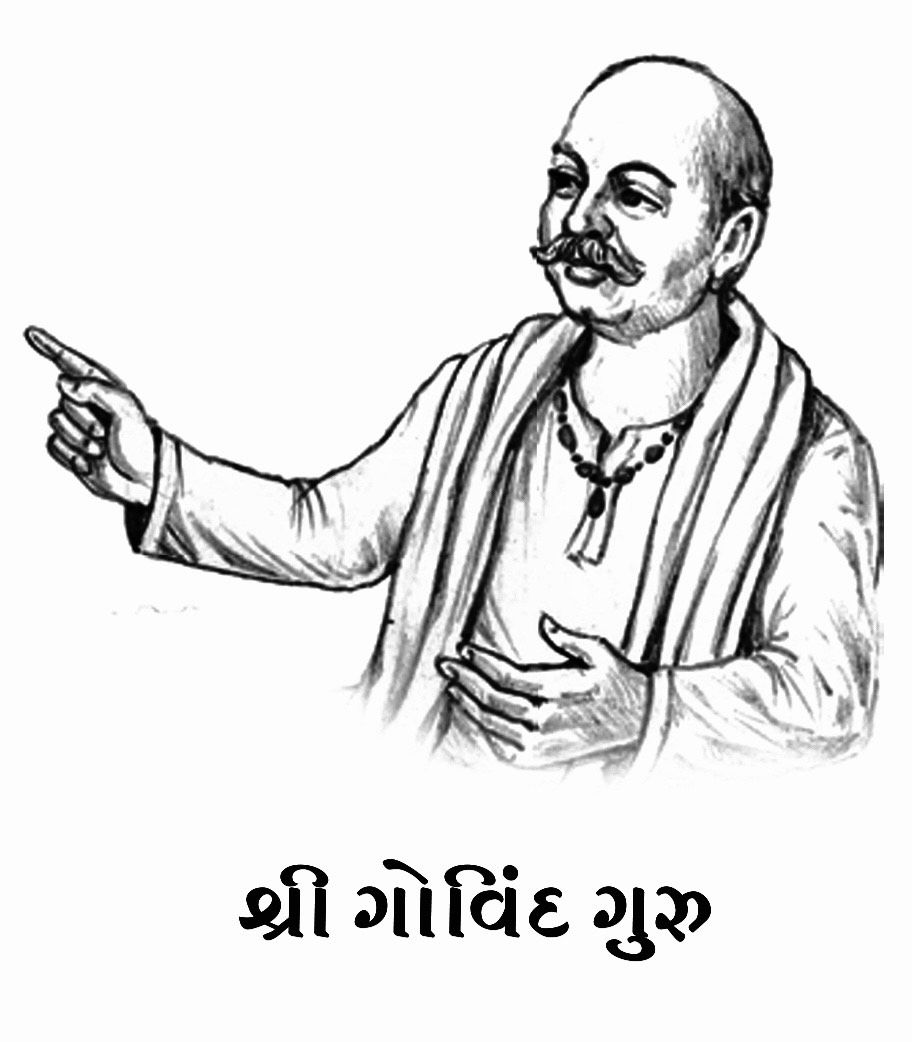
Guru Govind witnessed — and eventually led an uprising against — the humiliation and exploitation of the Bhils by the upper caste feudal lords and kings.
Learning about the work done by Guru Govind in the social uplift of the tribal community, another ardent social reformer of the time, Swami Dayanand Saraswati, expressed his desire before the Maharana of Udaipur to meet Guru Govind.
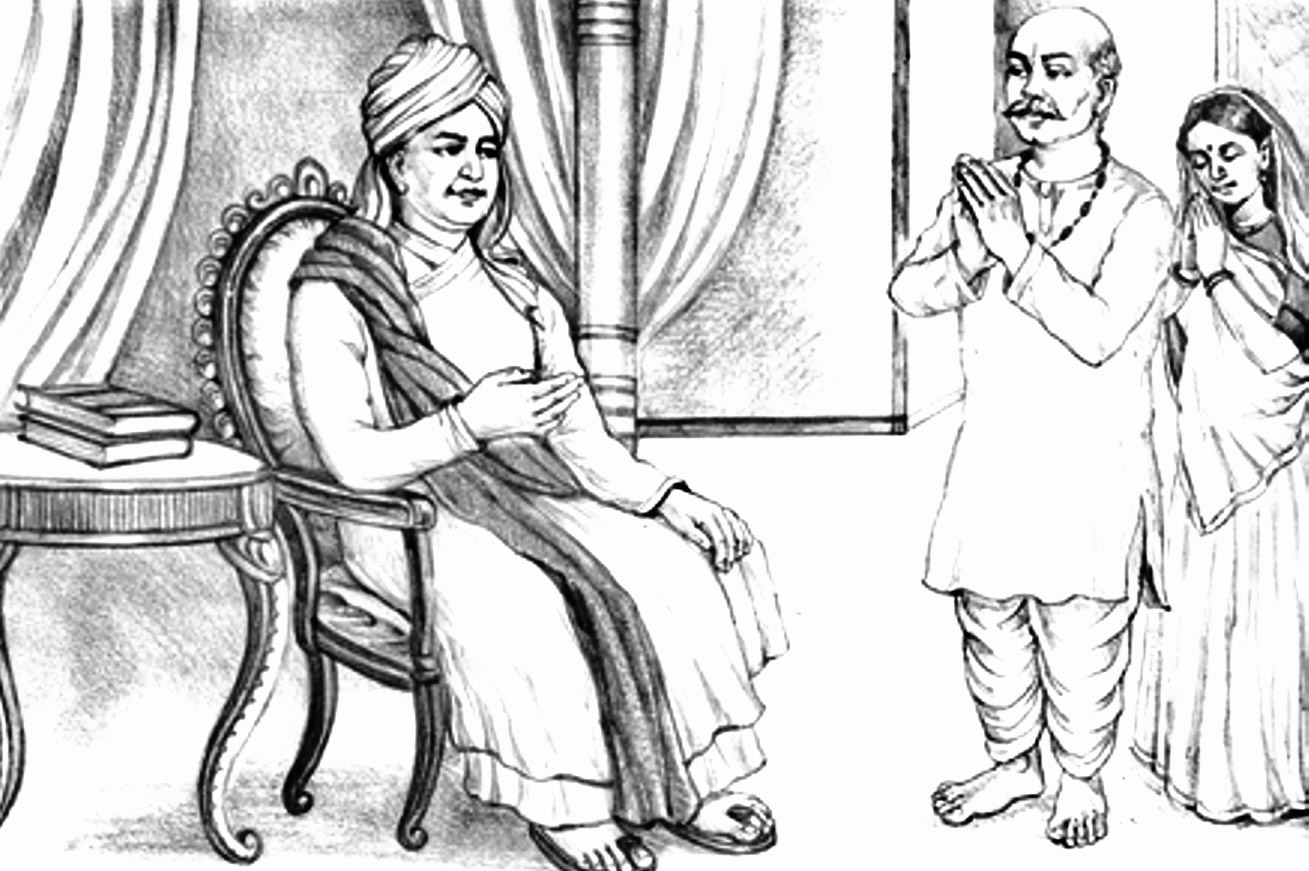
Seeing Guru Govind’s love and compassion for the tribal people, Saraswati blessed him with sacred religious knowledge and wisdom, the story goes. It is also said that Saraswati inspired Guru Govind to revolt against the British.
The Mangarh movement
Fed up with being oppressed, humiliated and exploited by the local kings, feudal lords of the British government, the poor Bhils felt a sense of liberation in Guru Govind’s words and teachings. He stoked the smouldering embers of the Bhils’ discontent into a fire that raged against the king of the province, the princely states, the feudal lords, and the British government.
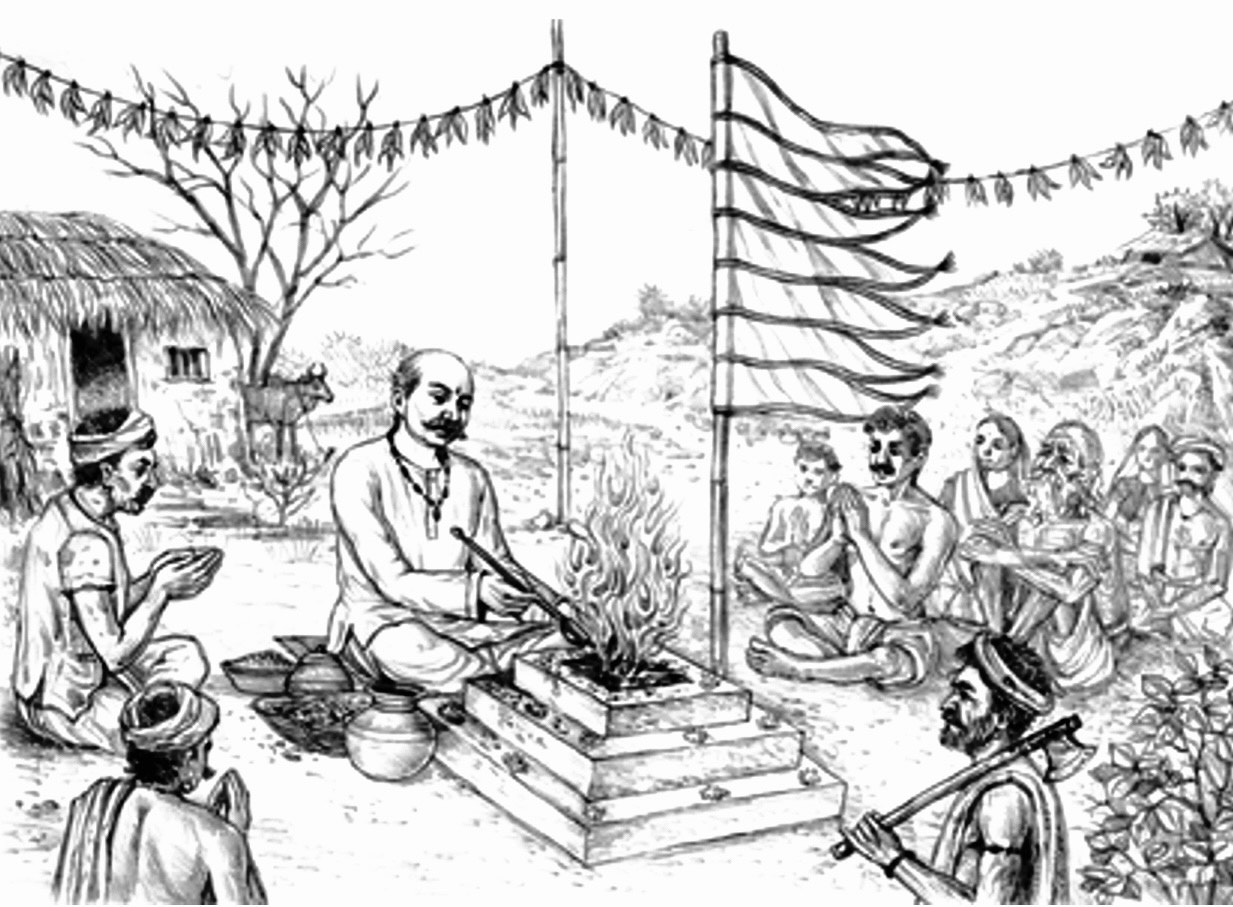
A French missionary in the village of Thandla in Madhya Pradesh, who was converting people to Christianity, had sent a written warning to the British rulers that Guru Govind was running a movement against the conversions.
In fact, all the kingdoms of the region were frightened by the movement run by Guru Govind against conversion.
Guru Govind’s disciples set off from Baheda-Rojda village in Idar state and reached Kahoda village near Mangarh, where he set up a holy fire, made seven marks and named it Nanakshah. Guru Govind gathered the Bhils of Santrampur, Kadana, Vanswada, Dungarpur and Panchmahal districts and set up an armed outpost around the Mangarh hill.
When the British came to know, they saw it as a movement against their rule. On October 18, 1913, the political agent of Vanswada called the political agent of Revakantha and sent a message to arrest Guru Govind and his aide, Punjabhai Pargi.
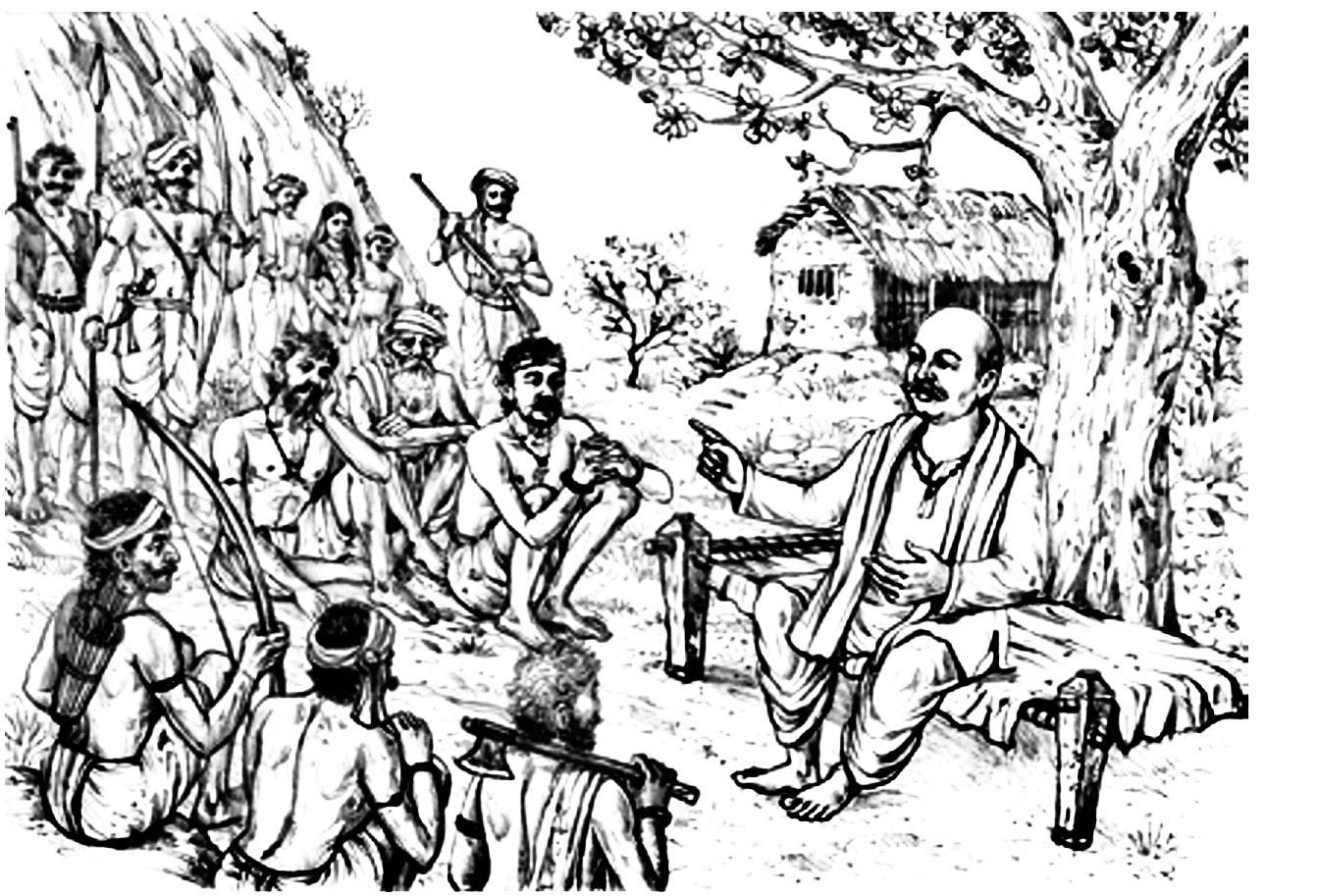
The local kings did their bit for the British by spreading rumours that Guru Govind actually wanted to usurp the kingdom and plunder the treasury of Santrampur state so the British were determined to take strict action against him. In order to disperse the mass of Bhils, the British and their allied princely states laid siege to the Mangarh hill from all sides.
The Bhils, who had been victims of oppression, tyranny, exploitation and hatred of feudal lords for centuries, refused to blink. they vowed to protect their leader.
Hymns and machine guns
All the people gathered at the top of the hill sang hymns to lift the morale. On November 6, 1913, the General Officer Command of the 5th Mahi Division informed the Chief General Staff that the Bhils of Santrampur were in the mood to revolt in large numbers. The political department requested that a British government machine gun company be set up, along with a 104 rifle company.
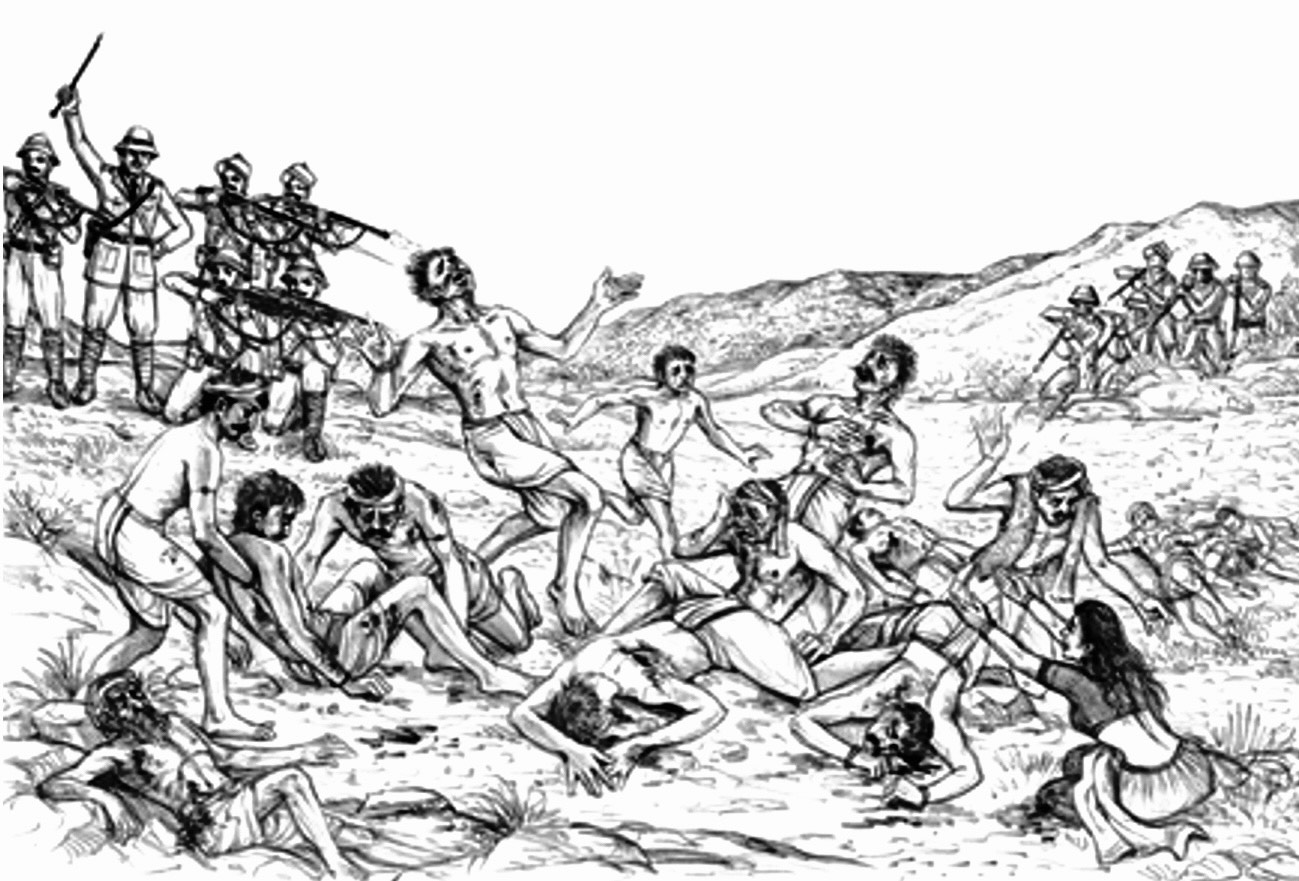
The higher authorities were also informed that as the situation was serious, it was imperative to evacuate the gathering from Mangarh skilfully. The phrase “shock and awe” may not have been in vogue then, but that was very much the intention as two companies, including machine guns, were loaded on animals such as mules and donkeys and taken to Vanswada. Soldiers from Mahi, Vadodara, Ahmedabad and Kherwada in Gujarat were prepared for battle.
In the southwest valley from Mangarh, a contingent of 20 armed police personnel set out along with the district superintendent of police. The kingdom of Baria was deployed in the north-western ghats with English cavalry. The English troops at Santrampur were ready to attack the west of Mangarh.
According to strategy, the attacking troops were divided into two divisions. The first division was to attack from the left and the rest of the troops were to stage the main attack. Captain Stonley, the commander of Mewar, marched westwards to Mangarh Dungar, where 200 to 300 Bhils were stationed.
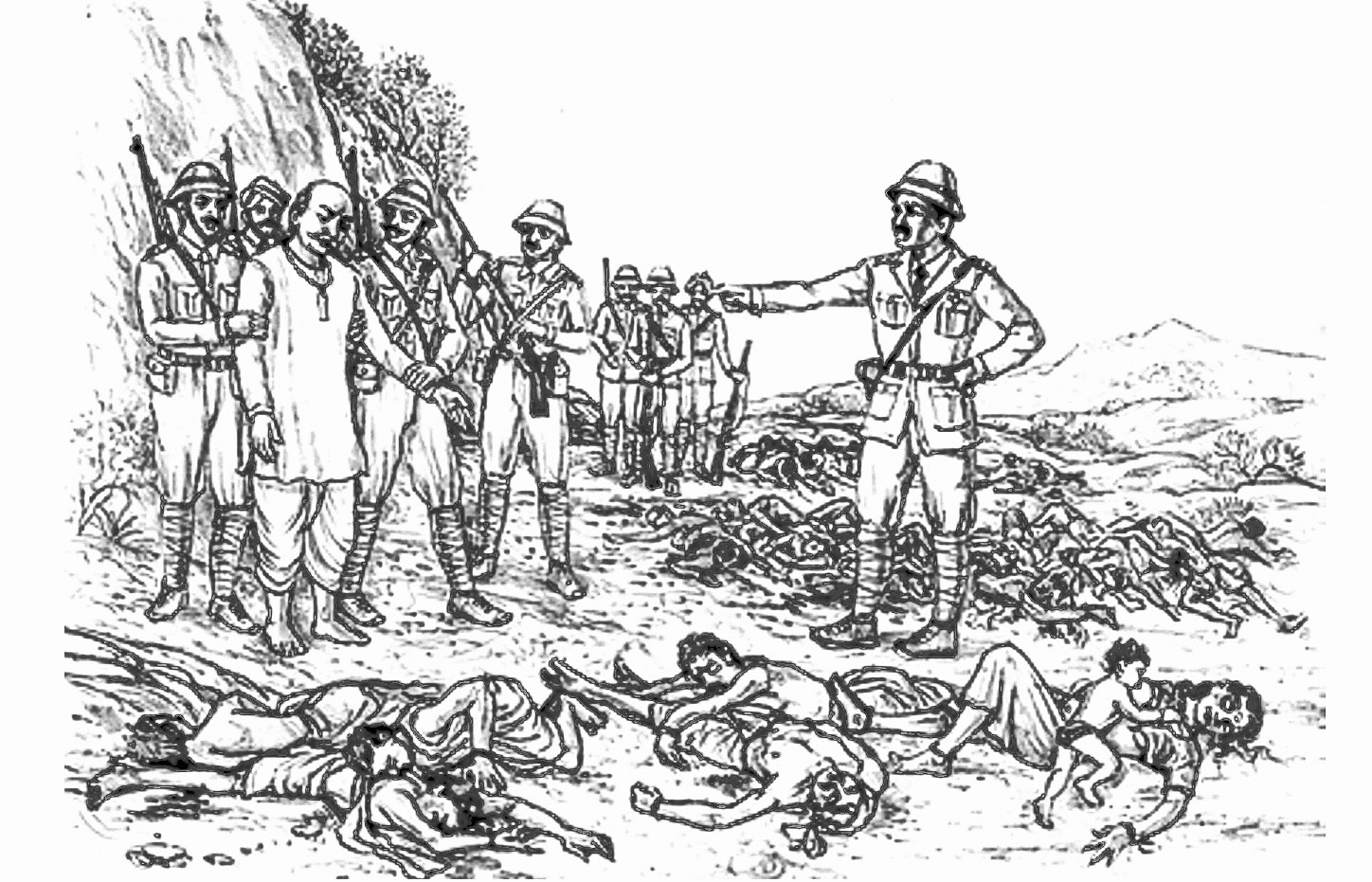
At exactly 8:30am, the British troops started firing. The machine guns removed the Bhils from the road above the southwest. With a constant barrage of bullets from all sides, the British advanced and surrounded the Bhils, who were barely defending themselves with native weapons, on the top of the mountain.
The British commissioner then ordered all troops to fire at will. After this, the Bhils broke.
The story also goes that the sight of a child grieving near the body of a woman killed in the firing awakened the humanity in the British commissioner, who ordered a ceasefire.
On November 12, 1913, a company of 104 Rifles led by Major Bailey was dispatched from Vadodara which reached Santarod the next morning. Apart from this, one company of the 7th Jat and two companies of Mewar were arranged at different strategic locations in the Mangarh hills. Thirty armed police personnel were also despatched along with the district superintendent of police in the south-western valley from Mangarh.

Eventually, more blood flowed and Guru Govind surrendered to protect his disciples.


